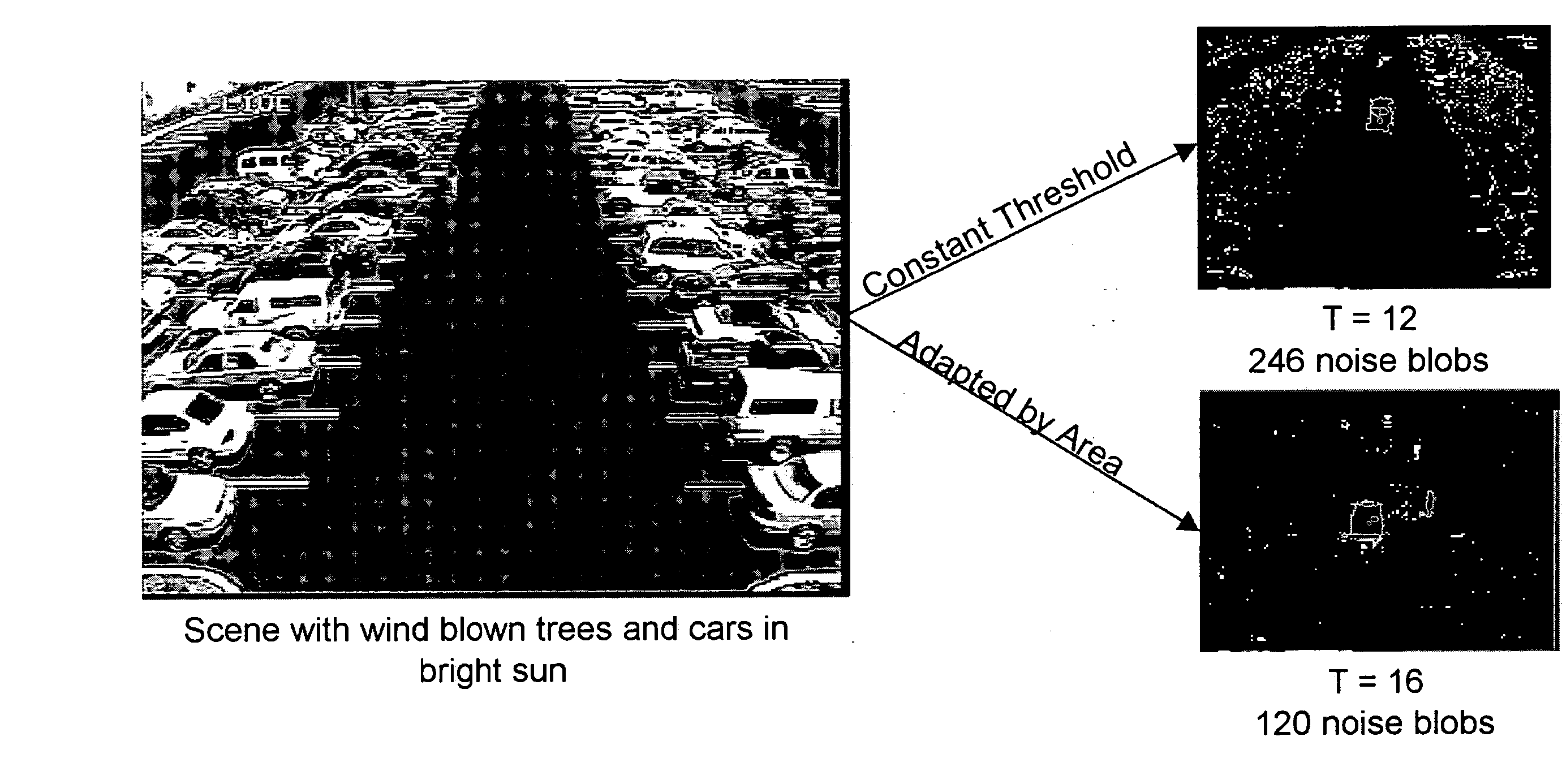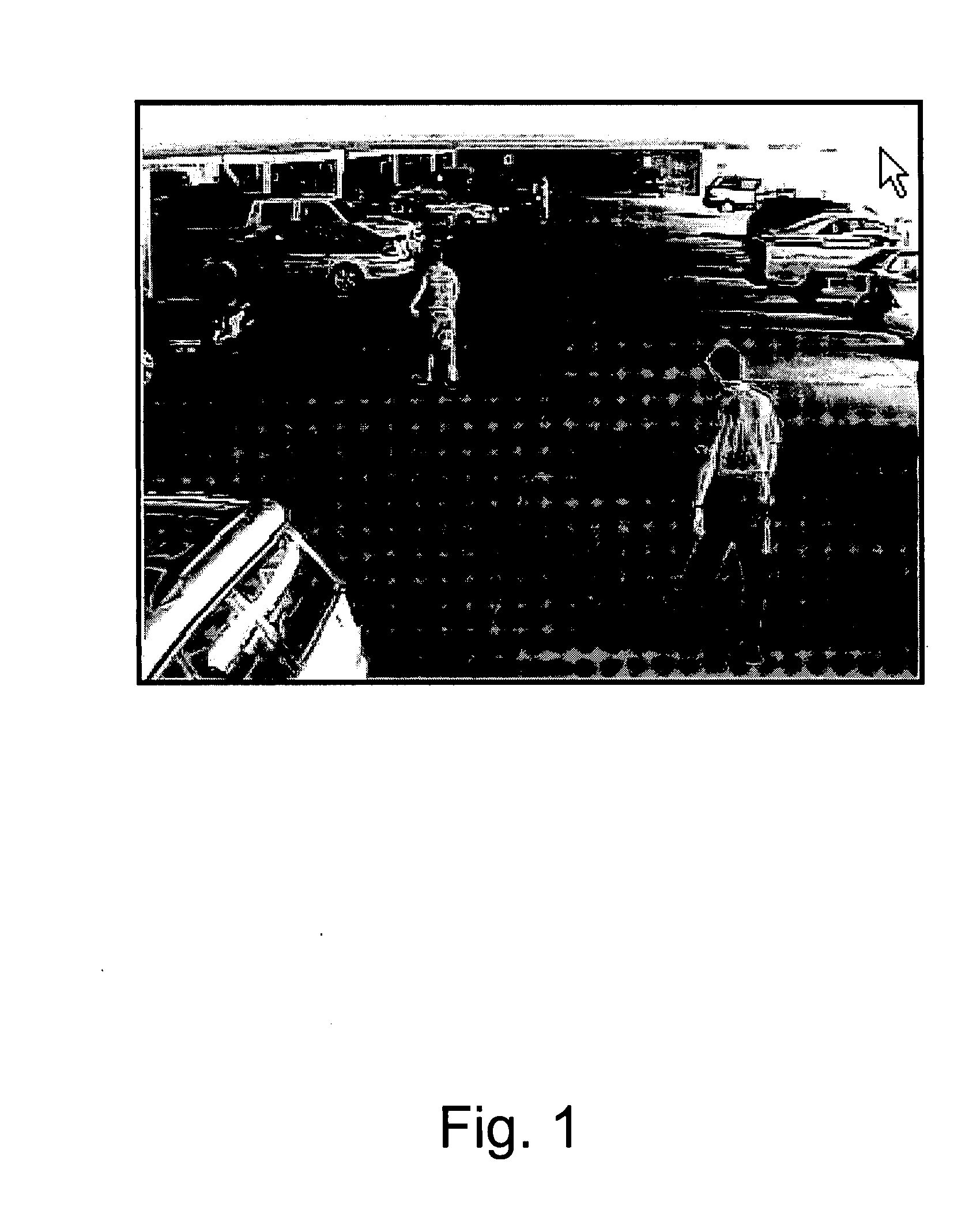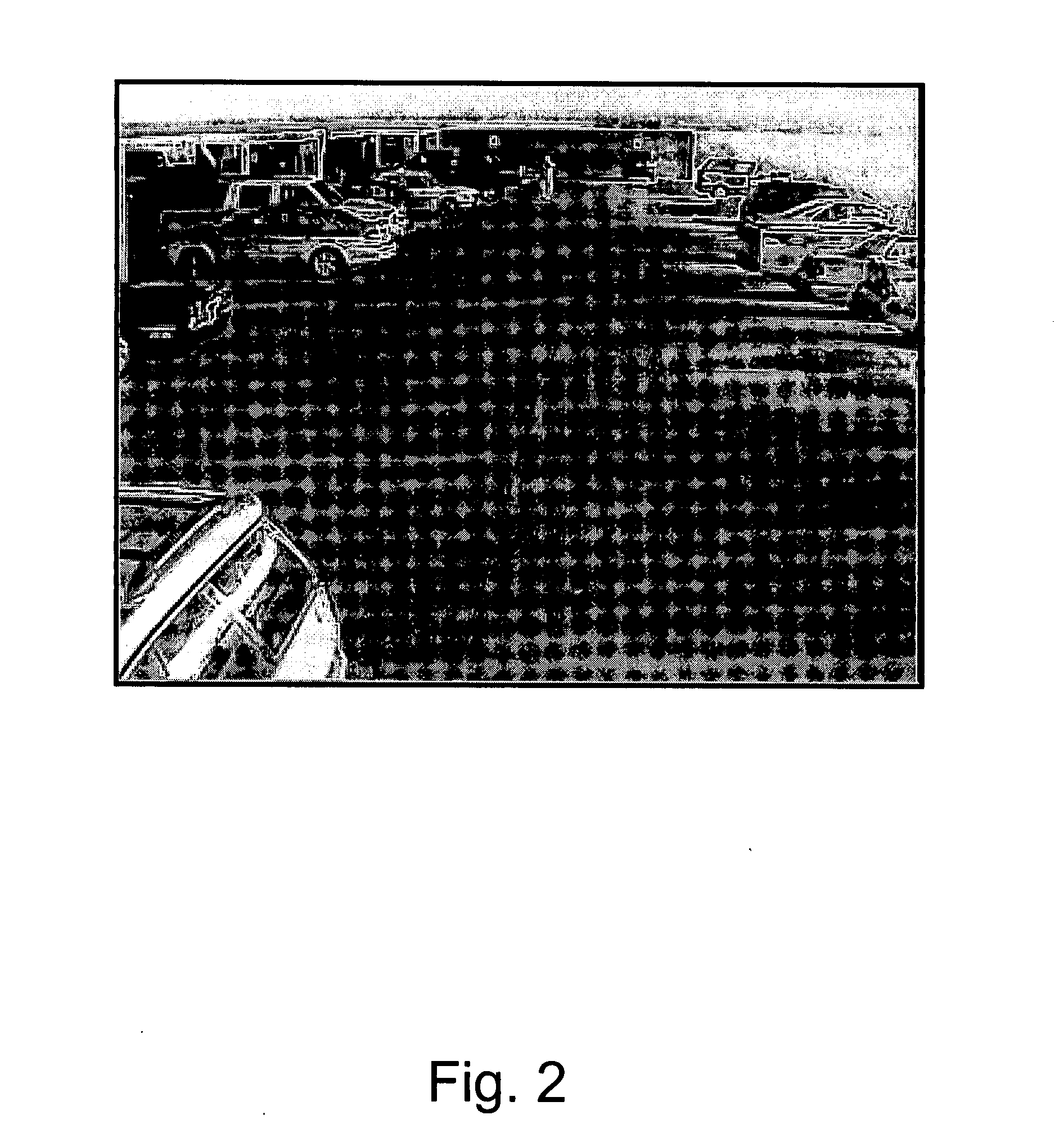Video Analysis Using Segmentation Gain by Area
a video analysis and gain technology, applied in the field of video monitoring and interpretation, can solve the problems of affecting the usability of information, affecting the acuity of certain areas, and reducing the fatigue of operators in a cctv system, so as to improve the segmentation of mixed objects, improve the acuity of certain areas, and reduce nois
- Summary
- Abstract
- Description
- Claims
- Application Information
AI Technical Summary
Benefits of technology
Problems solved by technology
Method used
Image
Examples
example 1
[0079] It is found in practice that the segmentation gain loop has been very stable with a single setting for the entire video scene. By comparison, at attempt to set segmentation gain for every pixel would certainly be unstable. Therefore, to maintain stability, and yet have the benefit of segmentation gain by area as herein described, the number of settings could be purposely limited to a predetermined number of value (such as 4, for example for illustrative purposes only). Further, the minimum area of the screen to have an independent gain setting will be limited to 1 / 64th of the screen, as an example for illustrative purposes. FIG. 2 illustrates the effect of an eight by eight grid of a scene to be analyzed as according to the Perceptrak system. Calculations will be generic to allow tuning the grid resolution. As according to that disclosure, to enable generic calculations, the number of grids will be determined by global variables SegGridsHigh and SegGridsWide. For this example...
example 2
[0083] This example illustrates the presently disclosed method of tracking noise by location. Reference again may be had to other examples setting forth representative lines of code of Visual Basic useful in implementing the present methodology and system configuration.
[0084] A new UDT (in the context of Visual Basic a “User Defined Type” is defined to hold data about noise in grids, (NoiseBySegGridType), with three longs (i.e., a 32 bit integer), thus:
InActiveMask / / set to 1 at start up if in the active area of themaskNoiseBlobThisPeriod / / Cum. NoiseBlobs since lastCalcSegmentationValuesNoiseBlobsLastPeriod / / NoiseBlobs used in lastCalcSegmentationValues
[0085] The NoiseBlobsLastPeriod element is reserved for the part of a PID loop. A new global UDT (NoiseBySegGrid) is allocated and used to accumulate the number of noise blobs for each map element. NoiseBySegGrid is allocated as SegGridsHigh*SegGridsWide. In the LabelBlobs function where Noise Blobs in incremented, the element o...
example 3
[0090] The example typifies calculation of gain adjustment. Reference may be had again to other examples setting forth representative lines of code of Visual Basic useful in implementing the present methodology and system configuration.
[0091] Gain adjustment by area is based on a gain figure for DeltaSegmentation per DeltalNoise. The variable is named “DeltaSegGain” and the default value is to be set by test. A DeltaSegGain of 0.5 indicates an adjustment of one for each two noise blobs difference between the area under consideration and the screen average, where:
GainAdjustment=DeltaSegGain*(GridNoise−AverageScreenNoise)
and where:
a higher GainAdjustment means a lower gain for the Grid;
and where:
AverageScreenNoise is adjusted for comparison with GridNoise.
[0092] For an example with 64 grids, the total number of noise blobs in the 1 / 64th grid is to be compared to the total number of noise blobs in the scene divided by 64.
[0093] For each background maintenance operation, a P...
PUM
 Login to View More
Login to View More Abstract
Description
Claims
Application Information
 Login to View More
Login to View More - R&D
- Intellectual Property
- Life Sciences
- Materials
- Tech Scout
- Unparalleled Data Quality
- Higher Quality Content
- 60% Fewer Hallucinations
Browse by: Latest US Patents, China's latest patents, Technical Efficacy Thesaurus, Application Domain, Technology Topic, Popular Technical Reports.
© 2025 PatSnap. All rights reserved.Legal|Privacy policy|Modern Slavery Act Transparency Statement|Sitemap|About US| Contact US: help@patsnap.com



